Visiting History: U.S. Holocaust Memorial Museum
 Teachers in the 2011-2012 TAH program Everyday Americans, Exceptional Americans visited the U.S. Holocaust Memorial Museum as part of their study of World War II.
Teachers in the 2011-2012 TAH program Everyday Americans, Exceptional Americans visited the U.S. Holocaust Memorial Museum as part of their study of World War II.
Visiting History: FDR Memorial
 In these segments, teachers discuss the purpose, size, and place of the FDR memorial. The site visit introduced the idea of teaching with monuments and memorials as primary sources.
In these segments, teachers discuss the purpose, size, and place of the FDR memorial. The site visit introduced the idea of teaching with monuments and memorials as primary sources.
Visiting History: Grant Memorial
 General Grant from many perspectives. Teachers discuss how the Grant memorial reflects the memory of the Civil War and what it tells us about Grant as a Civil War general.
General Grant from many perspectives. Teachers discuss how the Grant memorial reflects the memory of the Civil War and what it tells us about Grant as a Civil War general.
Visiting History: World War II Memorial
 Teachers think about the construction, characterisitcs, and intended audience of the World War II memorial while discussing their interpretations. The site visit explored the idea of teaching with monuments and memorials as primary sources.
Teachers think about the construction, characterisitcs, and intended audience of the World War II memorial while discussing their interpretations. The site visit explored the idea of teaching with monuments and memorials as primary sources.
Visiting History: The Paradox of Liberty
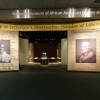 Teachers investigate the paradox of liberty through primary sources on display by National Museum of African American History and Culture, hosted by the Museum of American History. This workshop was part of the 2012-2012 TAH program.
Teachers investigate the paradox of liberty through primary sources on display by National Museum of African American History and Culture, hosted by the Museum of American History. This workshop was part of the 2012-2012 TAH program.
Visiting History: Monticello as Experiment
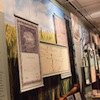 Teachers explore the visitor center at Monticello. The exhibit places Monticello in the context of the 18th and 19th centuries and displays evidence of social life on the plantation and Jefferson’s experimentation with new ideas.
Teachers explore the visitor center at Monticello. The exhibit places Monticello in the context of the 18th and 19th centuries and displays evidence of social life on the plantation and Jefferson’s experimentation with new ideas.
Visiting History: Monticello House Tour
 Jefferson’s home provides a unique insight to his life as a designer, architect, scientist, and politician. These videos are filmed in and around Jefferson’s living space, as teachers discuss how his ideals are reflected through Monticello.
Jefferson’s home provides a unique insight to his life as a designer, architect, scientist, and politician. These videos are filmed in and around Jefferson’s living space, as teachers discuss how his ideals are reflected through Monticello.
Visiting History: Daily Life at Monticello
 Teachers analyze objects to determine what daily life was like for people who lived at Monticello. People experienced day-to-day activities differently, despite close proximity. The items they carried in their pockets reveal more about daily responsibilities and leisure activities.
Teachers analyze objects to determine what daily life was like for people who lived at Monticello. People experienced day-to-day activities differently, despite close proximity. The items they carried in their pockets reveal more about daily responsibilities and leisure activities.
In the Classroom: Washington Crosses the Delaware
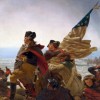 Fourth grade teacher Karen Eanes uses historical fiction along with a painting to integrate language arts, history, and art.
Fourth grade teacher Karen Eanes uses historical fiction along with a painting to integrate language arts, history, and art.
In the Classroom: Analyzing Campaign Videos
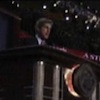 In these videos, eigth grade teacher Kristina Frank guides her students through an analysis of campaign commercials. Students consider multiple perspectives and propoganda in their discussion.
In these videos, eigth grade teacher Kristina Frank guides her students through an analysis of campaign commercials. Students consider multiple perspectives and propoganda in their discussion.
In the Classroom: Students Create Campaign Advertisements
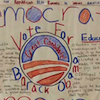 At the end of the unit, students are challenged to create their own campaign advertisements. Watch as students collaborate and see what products result from their research on the 2012 presidential election.
At the end of the unit, students are challenged to create their own campaign advertisements. Watch as students collaborate and see what products result from their research on the 2012 presidential election.


